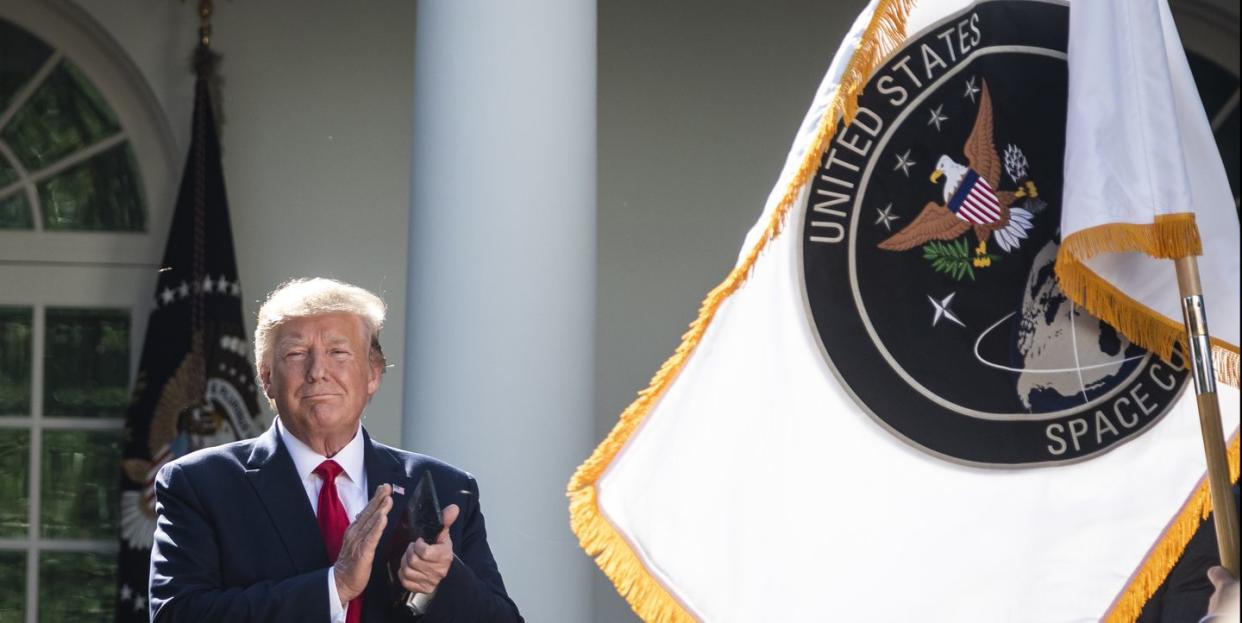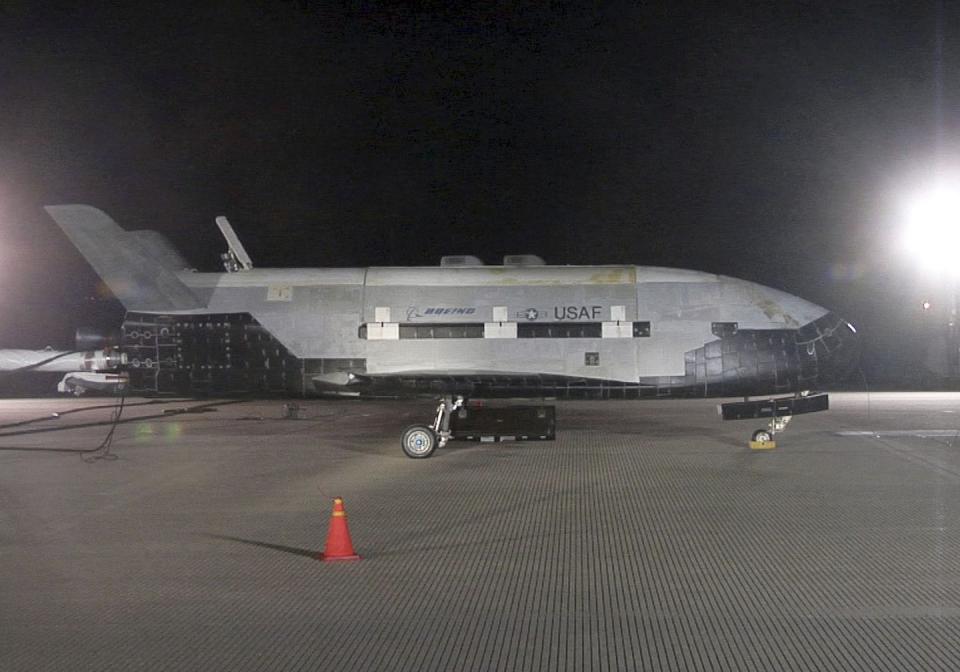The Space Force Could Be Up and Running in 90 Days

The Space Force is still a thing, and Air Force planners have begun to sketch out what it would look like once it's formally established.
We don't know when that will be.
Whenever it happens, the Space Force could be operational within 90 days, and will initially be made up of fewer than 200 troops from the Air Force, Army, and Navy, as well as a few additional personnel from the Pentagon and the U.S. intelligence community.
The Pentagon plans to have a nascent version of a Space Force up and running within 90 days. The service would primarily consist of Air Force, but also a small number of Navy and Army personnel. Fewer than 200 troops would then go to work on fleshing out America’s newest military branch, figuring out how it would work as an organization to defend the country’s interests in space.
According to Defense News, Air Force planners have sketched out what the Space Force would look like after it's formally established (whenever that is). The Space Force will consist of 151 Air Force personnel, 24 Army, 14 Navy, and nine additional personnel from the Pentagon and the U.S. intelligence community. These individuals would then begin building America’s sixth and newest branch of the armed forces. The report quotes acting Air Force Secretary Matt Donovan as saying he favors a “flat, agile, rapid organization.”
Ultimately up to 15,000 Air Force personnel could switch over to the Space Force during the first five years, plus an unknown number from the other branches.

There are a lot of unknowns about the Space Force. Will it be its own, totally independent branch of the armed forces, or will it function as a part of the Air Force, similar to how the Marine Corps functions as part of the Navy? The Marines rely heavily on the Navy to get to trouble spots around the world, so that relationship is a sensible one. The Space Force, on the other hand, will not necessarily need the Air Force. If anything, the Air Force will need the Space Force.
Another unresolved issue with the Space Force is how much responsibility it is given. Will the Space Force concentrate on threats to U.S. space assets and threats to U.S. territories from space, or will it actually control America’s space assets?
It seems likely the Space Force will concentrate on countering anti-satellite weapons and space-based weapons, but there’s also the matter of America’s network of spy satellites, military navigation (GPS), and military communications satellites. Do those remain an Air Force mission, or does the new Space Force get everything space-related?
The challenges of setting up a new military branch are formidable. Where will Space Force personnel and their dependents live and work? What will the rank structure look like? If the Air Force has airmen and the Navy has seamen, will Space Force personnel be spacemen?
What traditions will the Space Force embrace? Will there be a Space Academy or will the Space Force take commission graduates from West Point, the Naval Academy, and the Air Force Academy? What will Space Force hats look like?
This will all have to be hashed out—just as soon as the White House and Congress agree the Force is actually necessary and should be funded.
Source: Defense News
You Might Also Like

